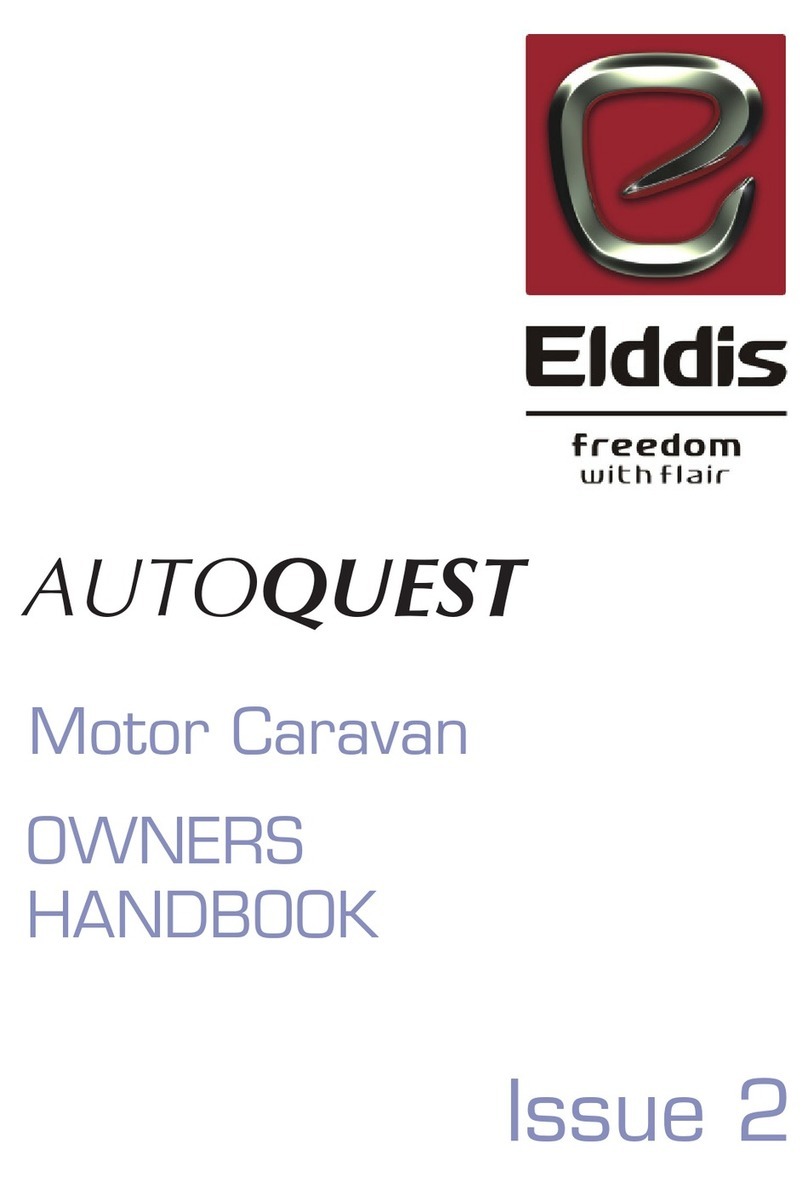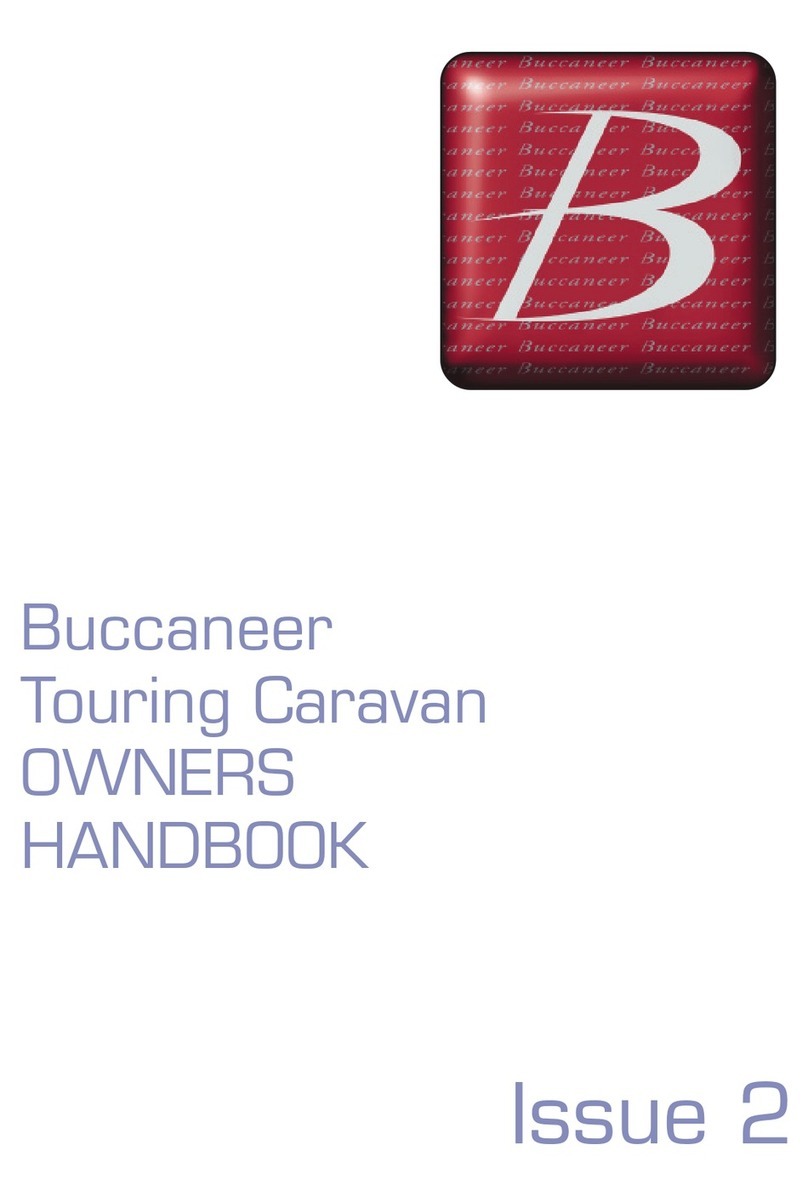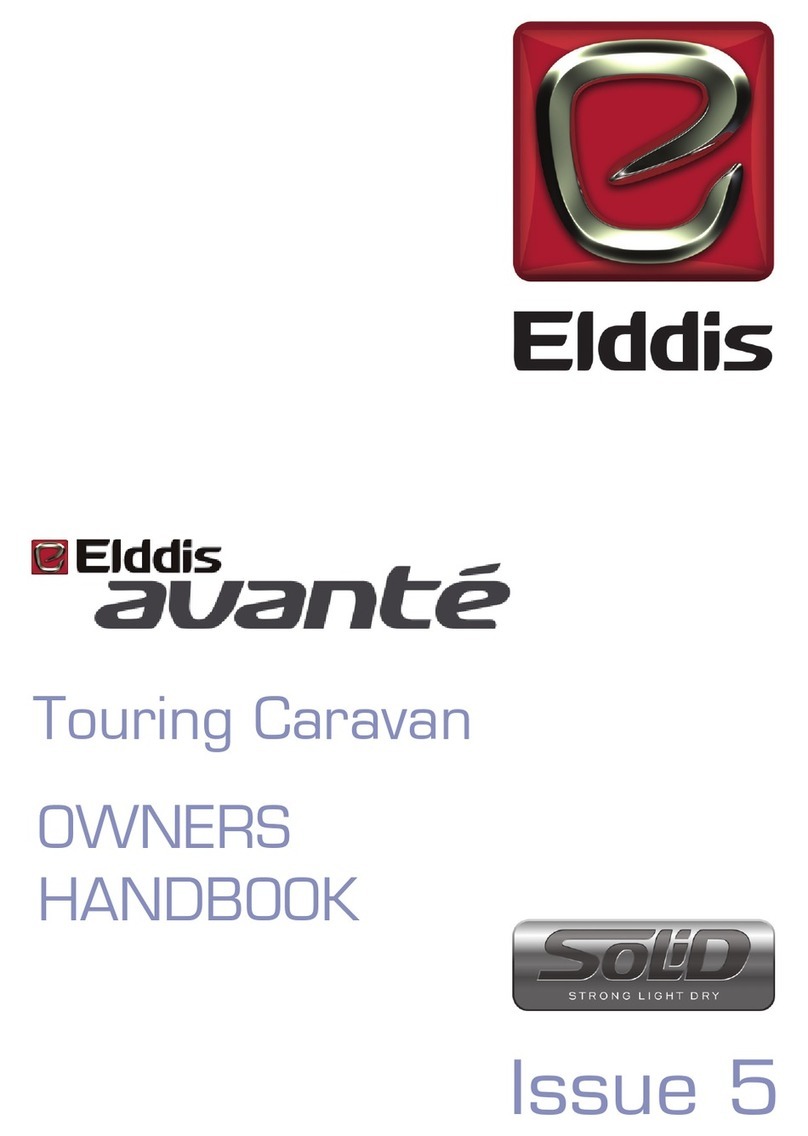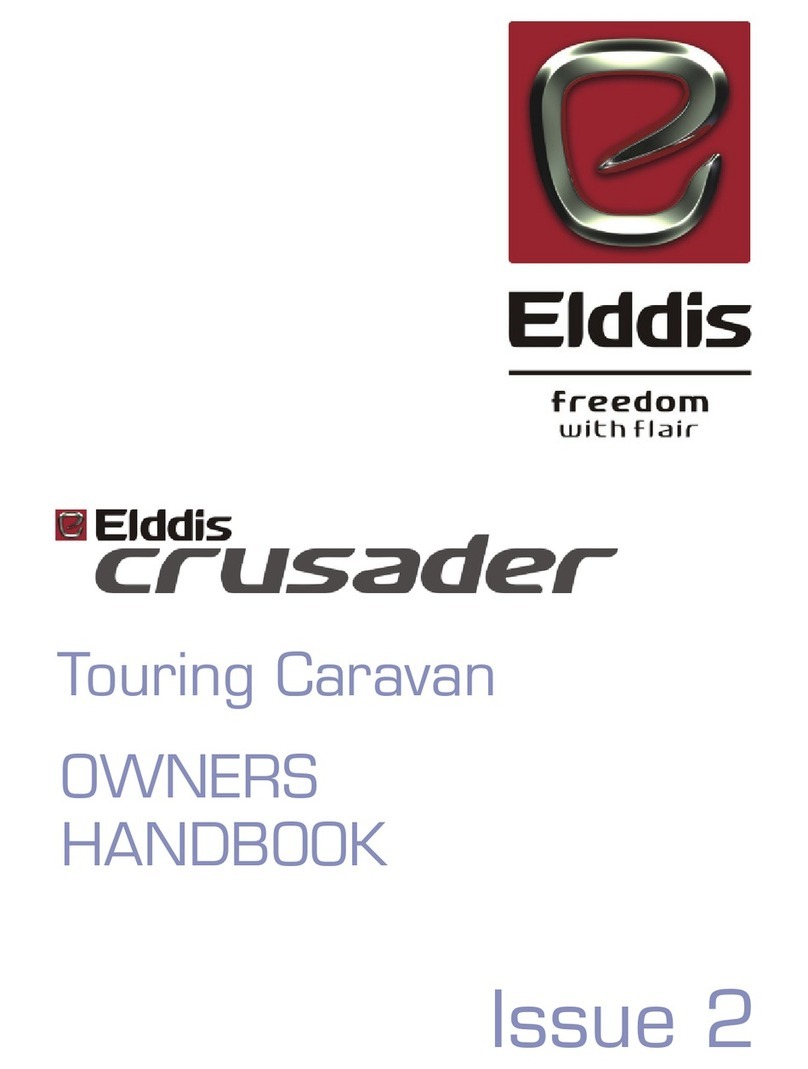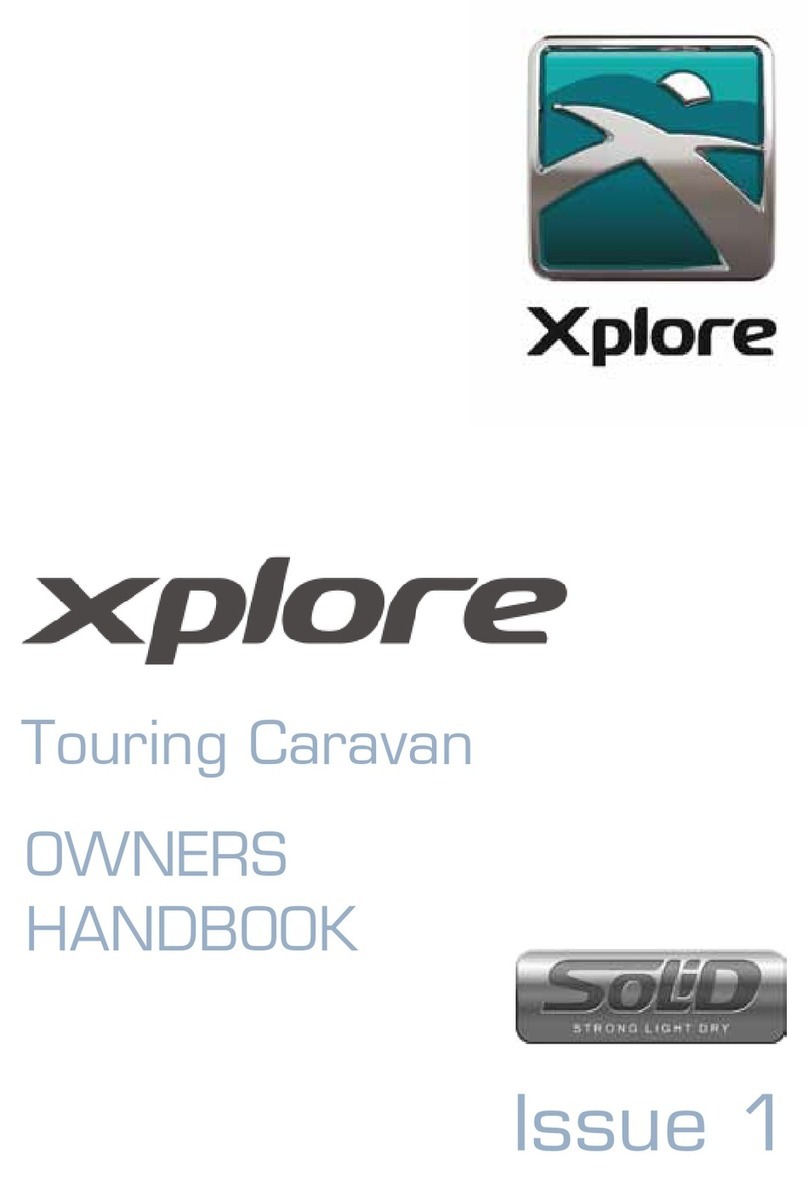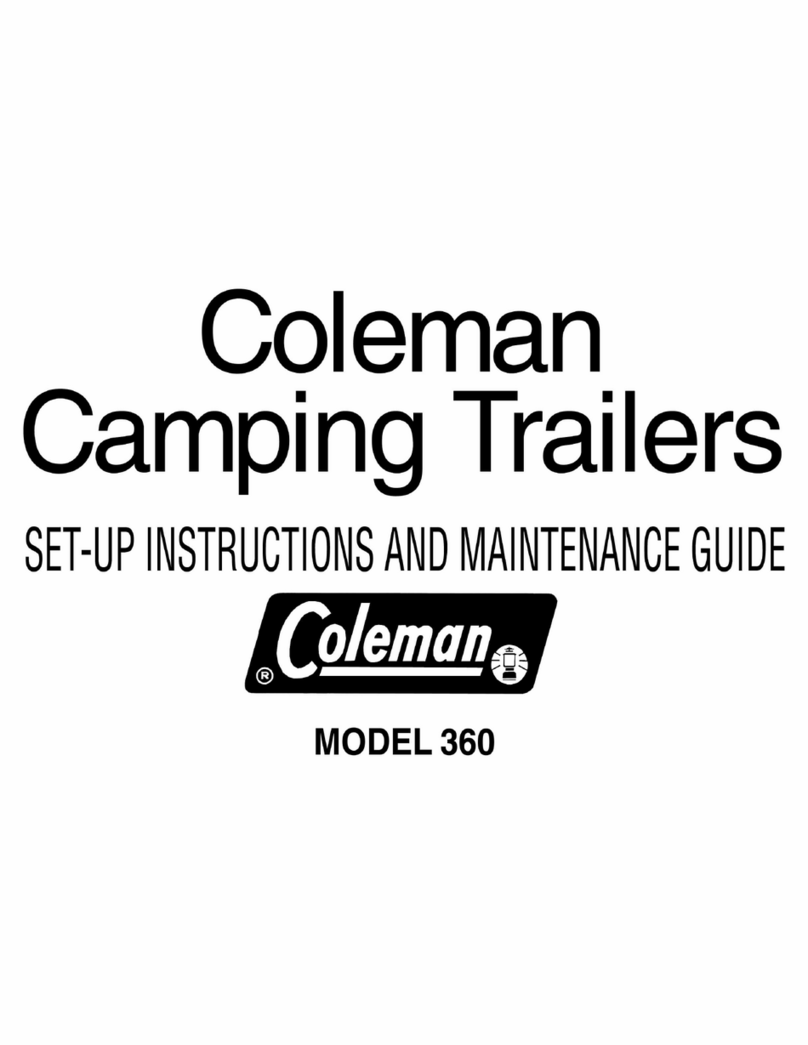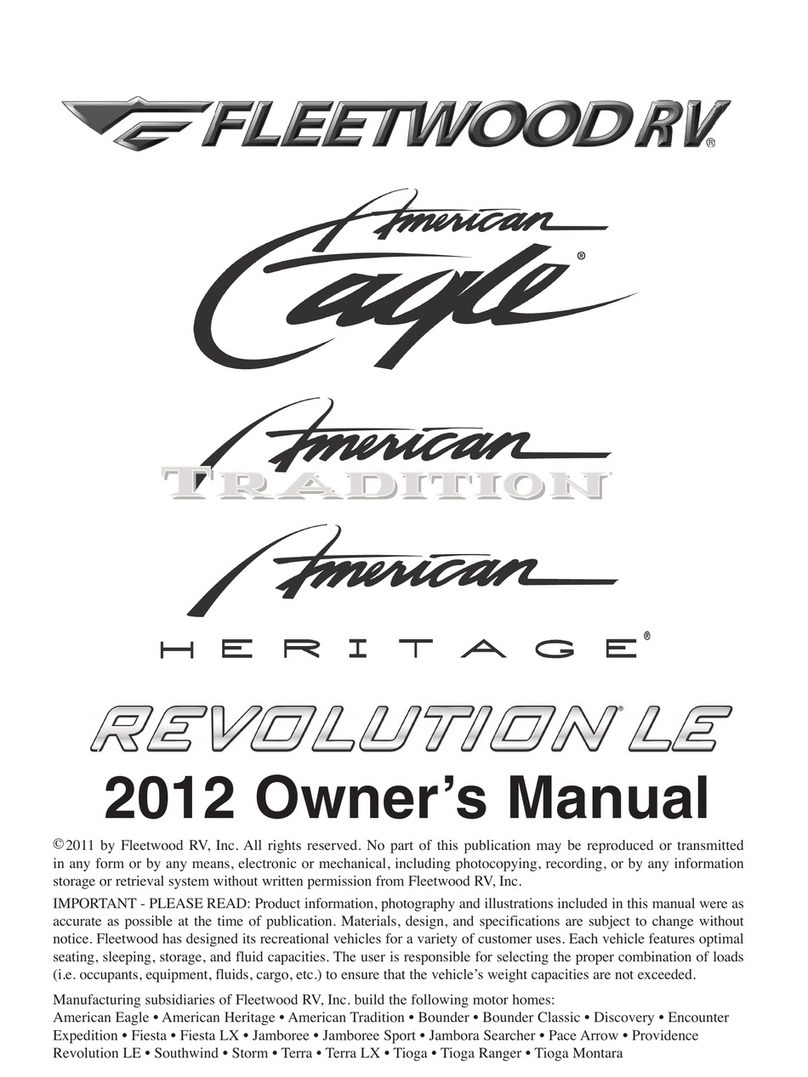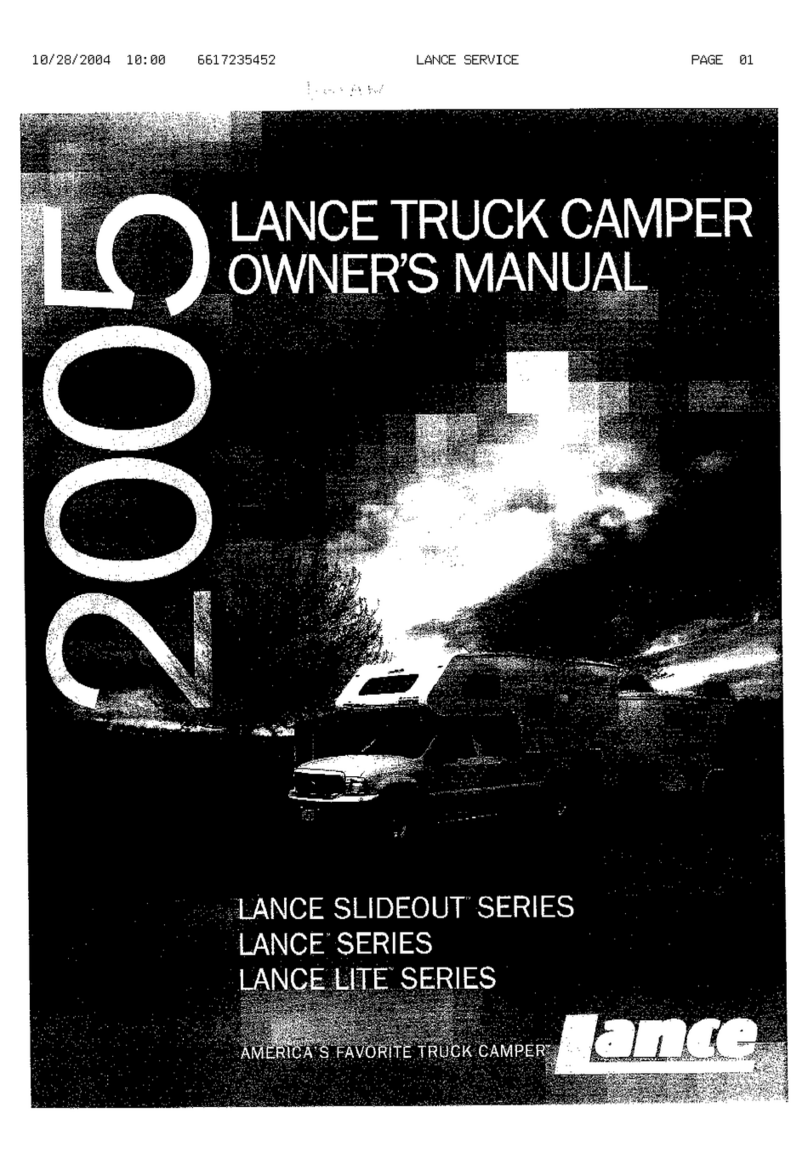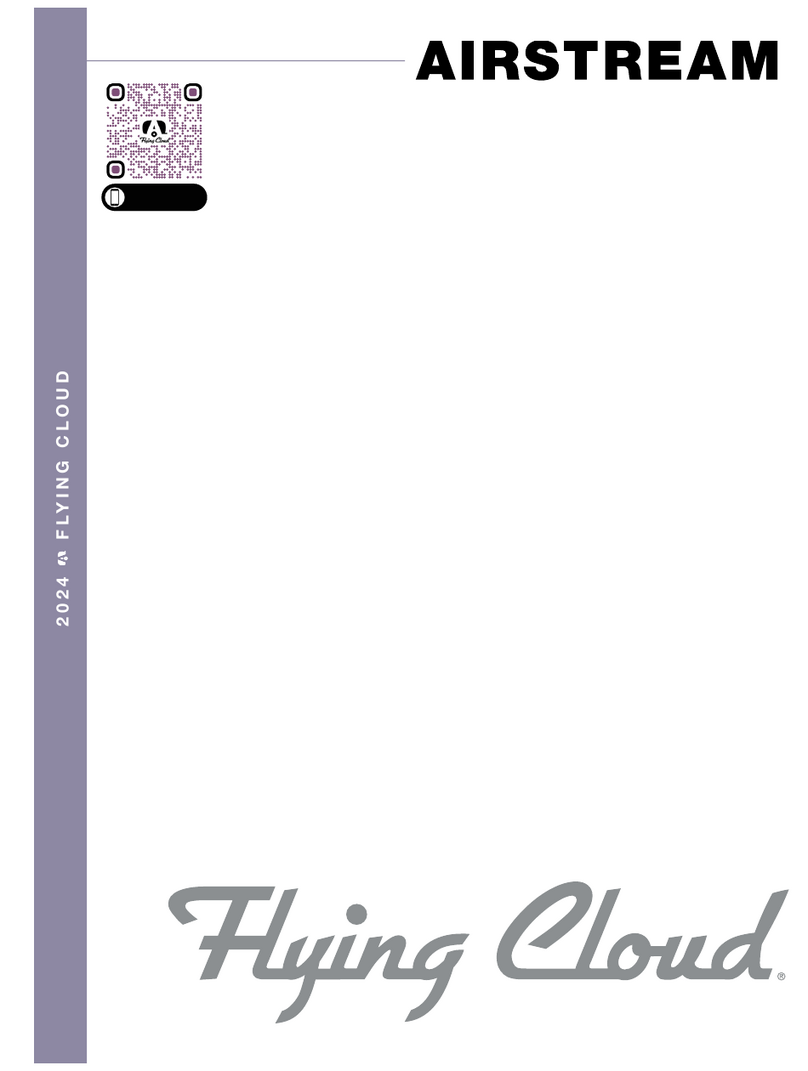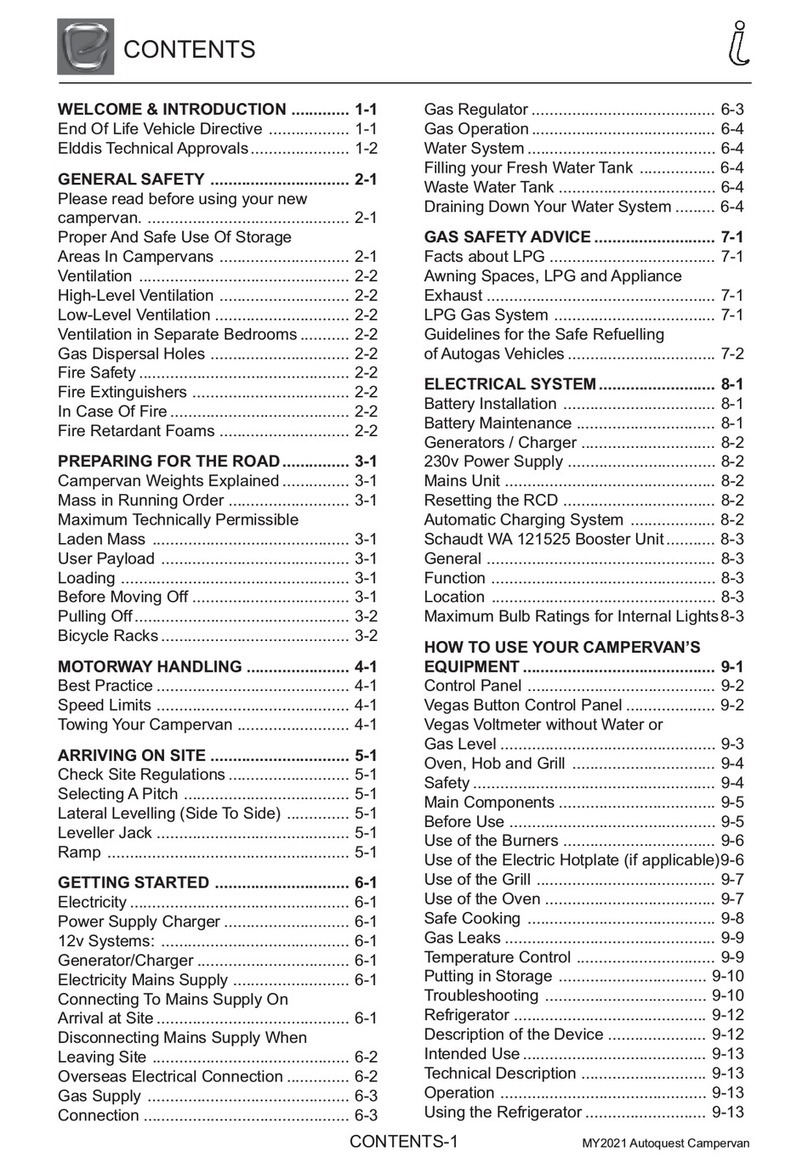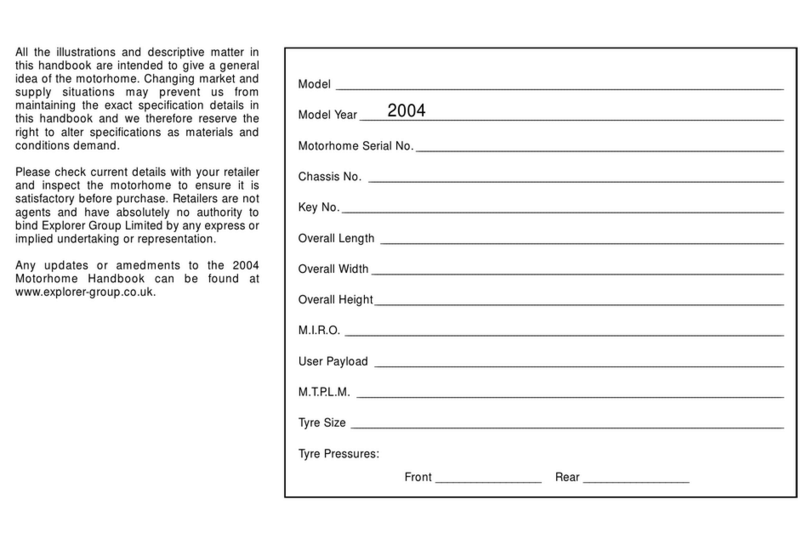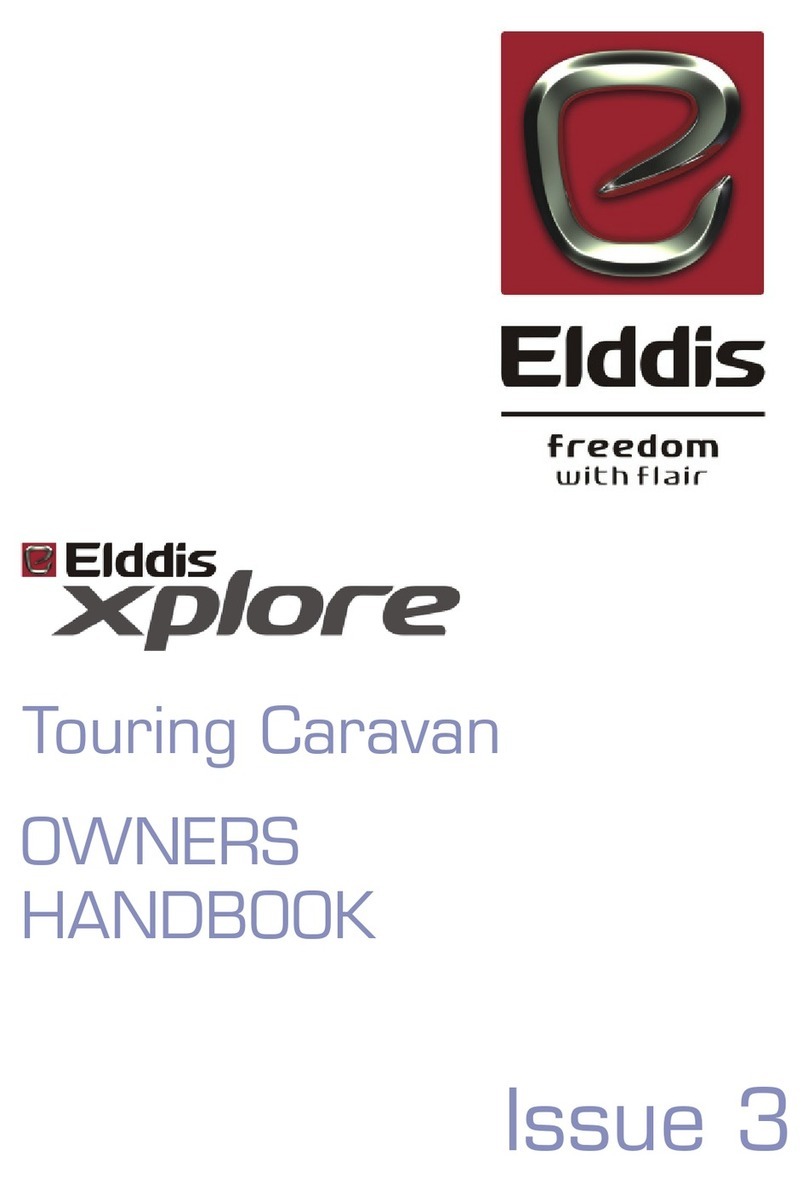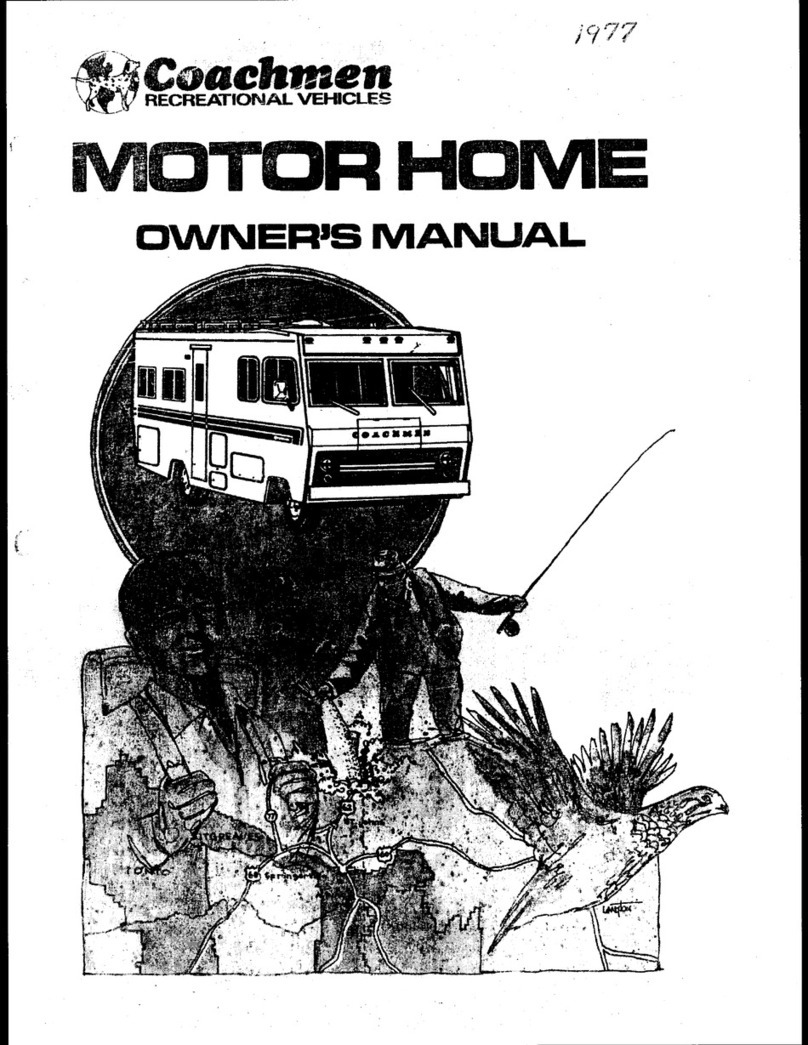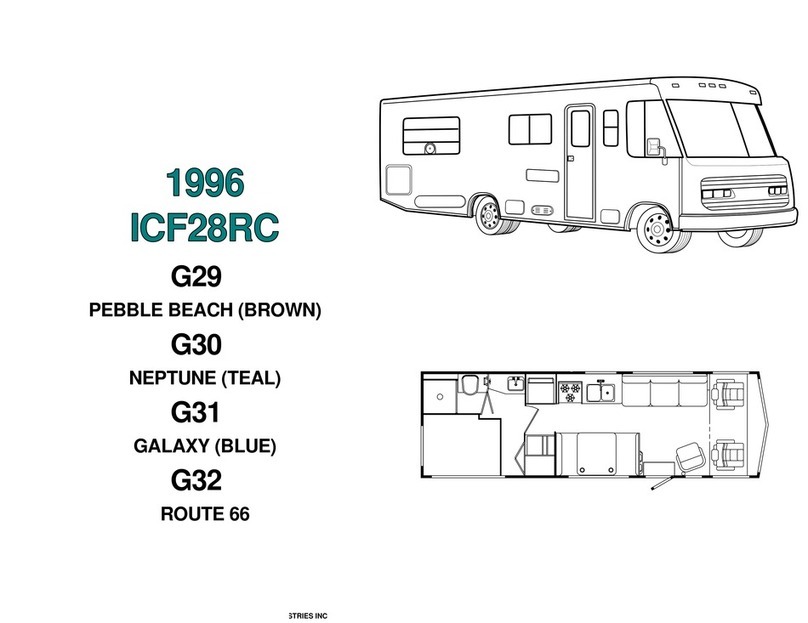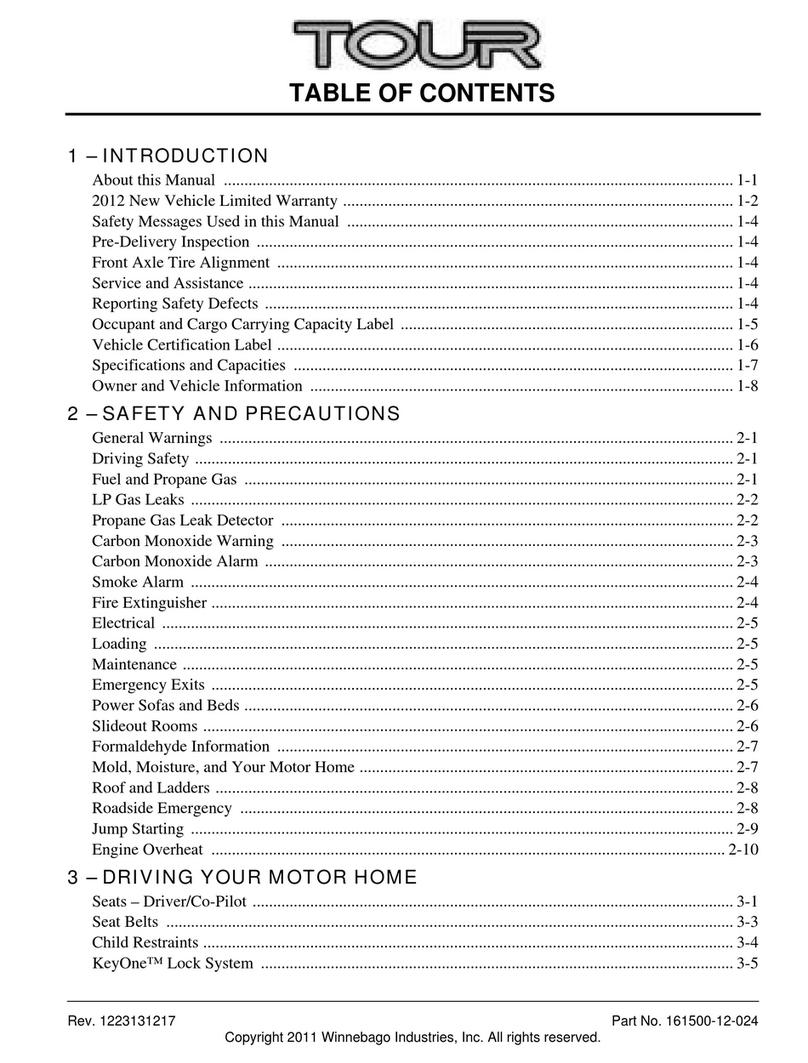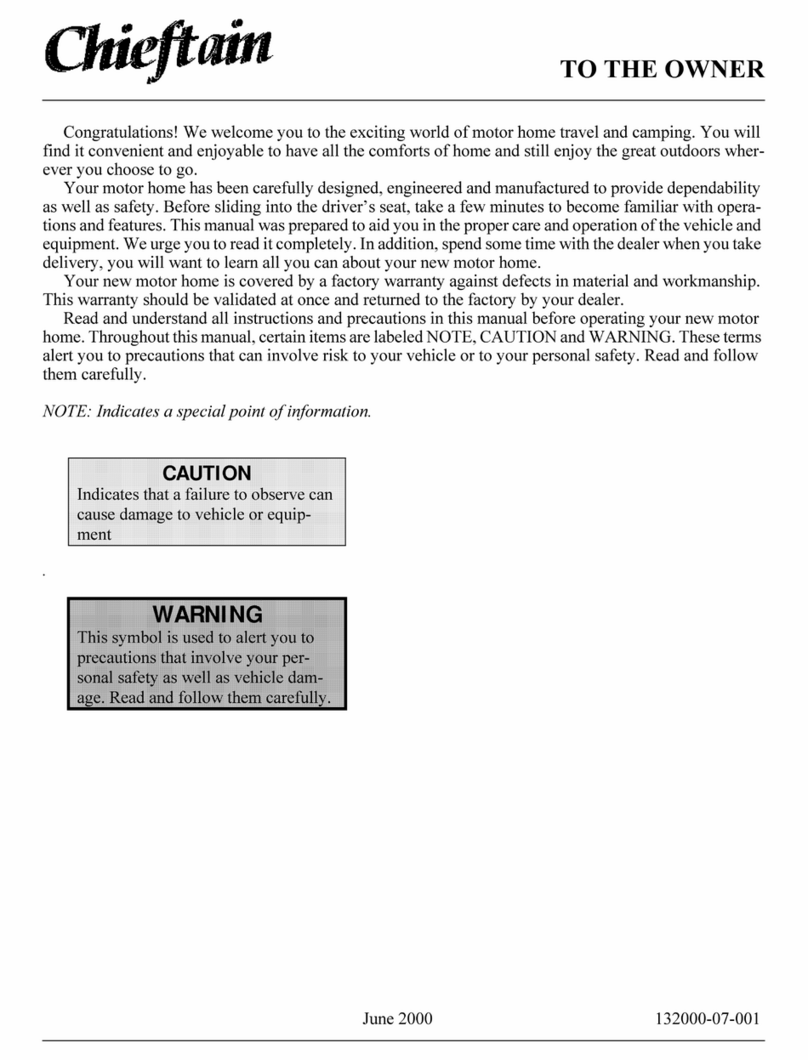
CONTENTS-2
CONTENTS
HOW TO USEYOUR CARAVAN’S
EQUIPMENT .................................... 9-1
Electrical Control Panels .................................... 9-1
Crusader ................................................................. 9-1
Cooking equipment .............................................. 9-3
Gas Hob ................................................................. 9-3
Electric Hotplate ................................................... 9-3
Gas Burners ........................................................... 9-4
Using the appliance ............................................... 9-4
Leaks ......................................................................... 9-4
Gas Grill ................................................................. 9-5
Gas Oven ............................................................... 9-5
Refrigerator Model Thetford N112 LCD
(Single Axle Models) .................................... 9-6
Operating instructions ........................................ 9-6
Powering with electricity .................................... 9-6
Selecting electrical power................................... 9-6
Powering with gas.................................................. 9-6
Switching off the refrigerator ............................ 9-7
Securing products for driving ............................ 9-7
Door locking mechanism .................................... 9-7
Troubleshooting .................................................... 9-8
Maintenance ........................................................... 9-9
Refrigerator Model Dometic RM8501 &
RM8551 ........................................................ 9-10
Operating modes and use of refrigerator .... 9-10
Operation ............................................................. 9-10
Manual energy selection ................................... 9-11
Electronic ignition ............................................... 9-11
Setting the cooling compartment
temperature ................................................. 9-11
Additional features ............................................. 9-11
Door locking ....................................................... 9-12
Fixing and releasing the door lock when
parking the vehicle ..................................... 9-12
Removable freezer compartment ................... 9-12
Positioning the storage racks ........................... 9-12
General advice .................................................... 9-13
Storing food in the freezer compartment .... 9-13
Making ice cubes ................................................. 9-13
Defrosting ............................................................ 9-13
Switching off refrigerator.................................. 9-14
Lighting .................................................................. 9-14
Winter operation ............................................... 9-14
Troubleshooting 2 .............................................. 9-15
Troubleshooting 1 .............................................. 9-15
Microwave ............................................................ 9-19
Battery Charger .................................................. 9-20
Smoke Detector ................................................. 9-20
Carbon Monoxide Detector............................ 9-20
Thetford Cassette C250 / C260 Toilet .......... 9-21
Parts ...................................................................... 9-21
Optional Features ............................................... 9-21
Preparing for use (standard) ............................ 9-21
Preparing for use with Optional Features .... 9-23
Using the toilet (standard) ............................... 9-23
Using the toilet with Optional Features ........ 9-23
Emptying ............................................................... 9-23
Emptying with Optional Features ................... 9-24
Cleaning and Maintenance ................................ 9-24
Toilet Bowl ........................................................... 9-24
Waste Holding Tank ........................................... 9-24
Winter operation ............................................... 9-25
Storage .................................................................. 9-25
Toilet unit malfunctions ..................................... 9-25
Telair Air Conditioning (option) ...................... 9-26
TV Bracket ........................................................... 9-29
Rooflights ............................................................. 9-30
The Omnivent (12v) Rooflight ........................ 9-30
The Heki 2 Rooflight ......................................... 9-30
Mini Heki Rooflight ............................................ 9-31
Windows .............................................................. 9-31
Polyplastic Window Opening ........................... 9-31
Seitz Window Opening ..................................... 9-31
Taps ........................................................................ 9-32
Blinds & Flyscreens ............................................. 9-32
Flyscreens ............................................................. 9-32
Gas Locker Door ............................................... 9-33
Internal Doors .................................................... 9-33
Magnetic Catches ............................................... 9-34
Bed Make-up ........................................................ 9-34
L-Shape Lounge Double Bed ........................... 9-35
Bunk Beds ............................................................ 9-35
Front Wrap Round Seating (Option) ............. 9-36
Removable Drawer Locker .............................. 9-37
TV Aerial ............................................................... 9-37
VHF Television Reception (Overseas only)... 9-37
TV/DVD Player ................................................... 9-37
BPW Nose Weight Indicator Jockey Wheel
(Option only) ............................................... 9-38
Explorer Protect - Autowatch Alarm System 9-38
BPW Intelligent Drive Control (iDc) System 9-39
iDC operating instructions .............................. 9-39
SECURITY ............................................. 10-1
Caravan Theft ...................................................... 10-1
Robstop WS3000 ................................................ 10-1
Anti-Wind Corner Steadies ............................. 10-1
Wheel Lock Diamond ....................................... 10-2
How to fit your Wheel Lock Diamond ......... 10-2
Hints for using the Wheel Lock Diamond .... 10-2
Key Card ............................................................... 10-2
CRIS - The Caravan Registration and
Identification Scheme - VIN ...................... 10-3




















